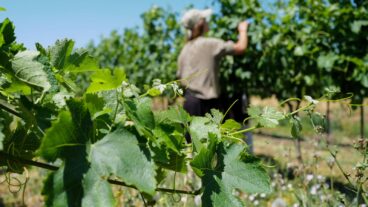Genova’s technology employs a novel technique for maintaining the high temperatures needed for the process, thus increasing its efficiency and maximizing the energy produced.
After you’ve enjoyed a tangy olive, don’t throw away the pit – it could soon be providing a clean, green answer to heat and electricity production, thanks to technology developed by Israeli start-up Genova, now setting up its first pilot plant.
The company, which was founded in September 2004, is headquartered in the northern town of Karmiel. The drive takes you up through a lush, verdant landscape, a fitting introduction to Genova’s environmental philosophy of “waste not, want not.” Biomass – organic waste – is generated as a by-product of many types of industry worldwide, such as forestry, and crop and livestock farming. The biomass is generally transported at great cost to a landfill to rot, or it is burned; both rotting and burning create methane, a greenhouse gas which plays a major role in global warming. However, if harnessed properly, methane can be a very valuable source of energy.
With increasing concern over the supply of fossil fuels for electricity generation, as well as the environmental implications of burning coal and oil, why not do something useful with biomass, thought Dr Yuri Wladislawsky, an engineer and the founder of the company, who emigrated to Israel from Tblisi, Georgia, in 1996.
Wladislawsky decided to focus first on the biomass produced from the olive presses that are a feature of the Middle Eastern landscape, “because olive waste is difficult waste to process because of the pits,” explains Yonat Grant, an industrial engineer who is the CEO of the company, which has two other employees as well as Wladislawsky and was set up within the Misgav Technology Center incubator, where it will stay for another year. If the company can succeed with olive waste, she says, then any other biomass will be simple in comparison.
First, the olive waste is heated and dried and then it is introduced into the reactor. Here it undergoes two processes, pyrolysis and gasification, which involve the biomass being heated to 800 degrees centigrade, at which temperature its molecules break down. A combination of high-calorie gases including methane and carbon monoxide are produced which, because they are lighter than air, flow upwards through a pipe into a standard gas turbine to generate electricity in the usual way. The other by-product is coke, which can be turned into the active type of coke that can be sold for use to power air conditioners or as filters for various substances.
Harnessing the power of biomass is not a new industry and there are a number of companies around the world who are attempting to show that biomass can replace some of the fossil fuels we use, but Genova’s technology employs a novel technique, which the company prefers not to disclose, for maintaining the high temperatures needed for the process. This technique means that “only ten percent of the electricity we produce is used to power the [olive waste conversion] process,” Granot told ISRAEL21c. “The process is 90% efficient. Our competitors are only 50% efficient, at best.” Thus, where the cost of a kilowatt/hour is 9 cents for the company’s competitors, Genova’s cost is only 2 cents per kw/h.
This high efficiency and low cost has attracted much attention, piquing the interest of the Israel Electric company, Israel’s sole electricity provider. “Israel Electric is looking for alternative sources of energy, not for economic reasons but for environmental ones, for society,” says Granot. Israel Electric has added a $60,000 investment to the NIS 1.4 million (approx $300,000) that the company receives from the government-run Misgav incubator over the two years of its stay. Genova will be relocating to Misgav shortly.
Genova already has a fully-working prototype to prove that the patent-pending concept works, and is now planning its first pilot project, a 200 kw/hour plant in the Druze village of Julis in northern Israel. The plan is that olive waste from Julis’ olive oil press will be fed into Genova’s reactor and produce enough electricity to power the press, so it will be self-sustaining.
“For 8000 hours, which is one year of production, we need 1600 tons of waste,” explains Granot. An olive press usually produces waste which is one-third of the weight of the olive oil produced, so 1600 tonnes of waste would be produced from a press making 4800 tons of olive oil. The press in Julis is a little smaller than this, so some waste will be brought in from other presses.
“The plan is to build [the pilot reactor] for the next olive season, which is September/October 2006,” says Granot. Genova is now looking to raise $1.25 million to pay for the pilot project and for marketing and sales of the reactor, which could be on the market in 2007.
There is an interested investor in California, famous for its wine industry and where environmentally friendly electricity production is being encouraged and subsidized, who asked to see if Genova’s reactor works with vineyard waste products.
“We tested it with wine waste from the Carmel Mizrachi vineyard, and we proved it works with wine,” says Granot. “For the US, we have proved that we can do it for any kind of biomass – wine, corn, sunflowers.”
There is also interest coming from Australia, which has a flourishing olive oil industry. Genova, whose focus is on small reactors, not larger than 200 kw/h, with processing of the biomass on site to avoid transport costs, will first target Europe. “There are 2000 olive presses in Spain, for example,” says Granot. And then there are Greece, Italy and all the other olive oil-producing countries, where governments are actively encouraging biomass conversion. Genova will sell them a 200 kw/h reactor for around $300,000, which the press will earn back in less than four years.
“It will pay for itself,” says Granot.
So the next time you have a martini, hang onto the olives – they could be heating your house.
(See Exclusive video report on Genova from IsraelHighTech.TV).












